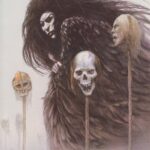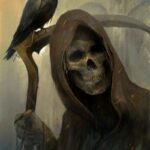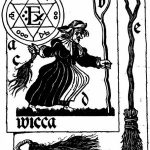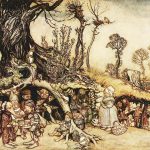The personification of death as an enemy, a monster or an stranger has been prevalent. In the portrayals of death as the other it was ascribed the characteristics of the alien, the opposite of the familiar.
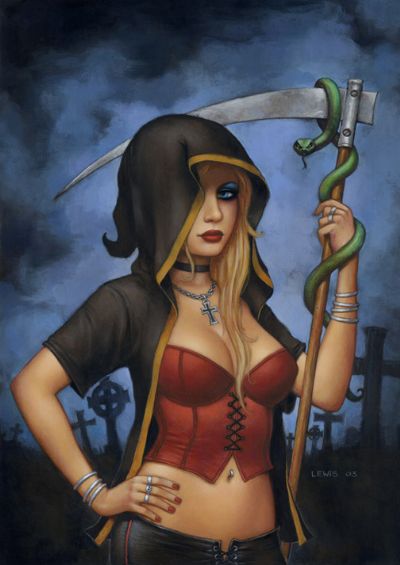
Ancient people took a friendlier approach to death. In Greek mythology, Thanatos is the deity associated with death, who was the twin brother of Hypnos, the god of sleep. He is described as an attractive young man with wings and a sword wheraeas the Valkyries, who decided which Norse soldiers should die in battle, were beautiful and heroic women.
This simply shows that the Greeks and Norses did not see death as something horrific, but accepted it as a part of life.
In the danses macabres or dances of death, death is assigned a rich multiplicity of guises, poses, and social conditions: as a fiddler, hunter, warrior, drummer, herald, or fool; on horseback, as Revelation’s fourth horseman, but also as a knight or King Death; as a reaper, executioner, nobleman, or courtier; as a pilot, gambler, tobacconist, trencherman, groom, chamberlain, actor, wrestler, or butcher.
Another mask that seventeenth-century writers fashioned for death was that of the fisherman: Death cast its net and sinker to capture his victim.
In other instances, Death become handsome, it is sometimes symbolically represented as a putto or a young man with a torch upside-down.
In the late-medieval genre of the Triumph of Death, death may emerge as a noble Lady or Queen (Petrarch’s “Donna La Morte”) riding her classical chariot over mangled mortal remains.
While mostly, Death is depicted as a male, there have been legends associated with death being a female. For instance, in Poland, death is a female word Śmierć and is believed to be an old skeletal woman, whose appearance is quite similar to that of the traditional Grim Reaper except that she wears a white robe, not black.
Also, in Scandinavian mythology, death is considered to be an old and ugly woman, who especially came into the picture during the Black Plague. It is said that this old lady came with either a broom or a rake and wore a black robe. The days she brought a broom, all would die in the area, while some would escape death when she carried a rake.
A similar belief was prevalent in Lithuanian mythology, where death was called Giltinė who was an old, ugly woman with a long blue nose and a poisonous tongue. In both regions, this depiction of death, later evolved as the Grim Reaper wearing a black robe and holding a scythe.



